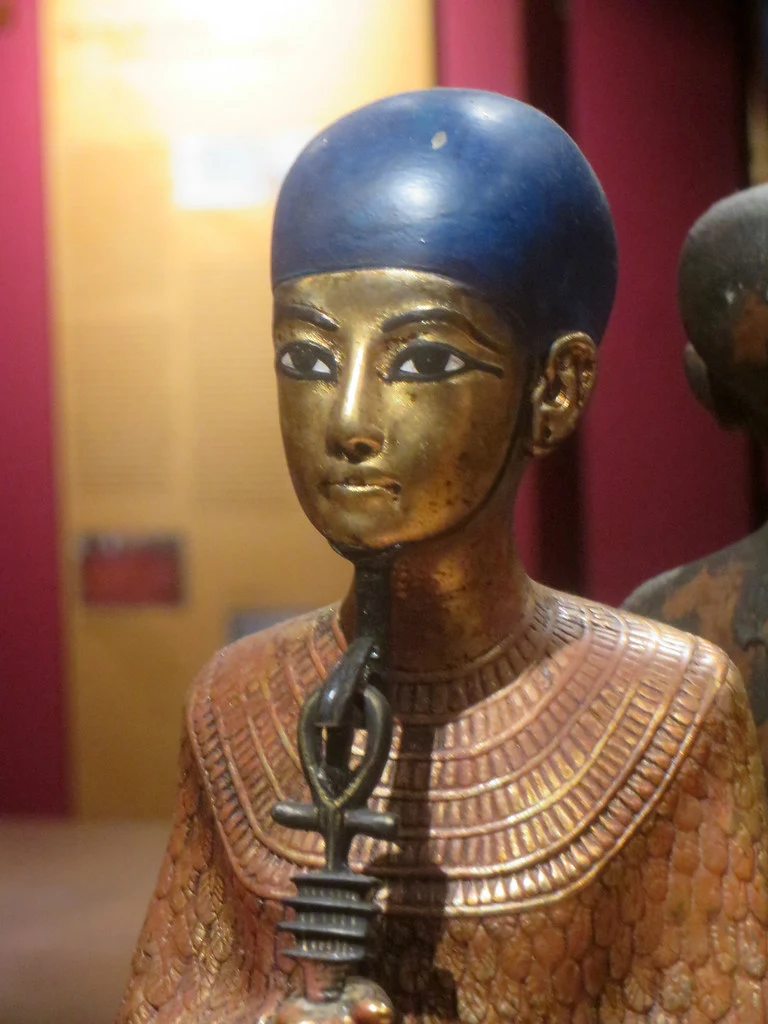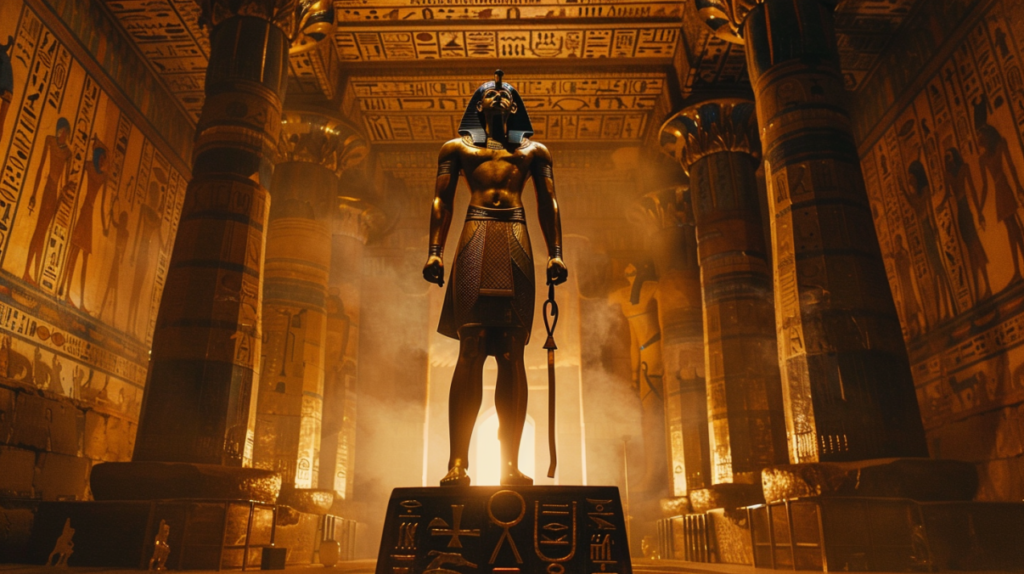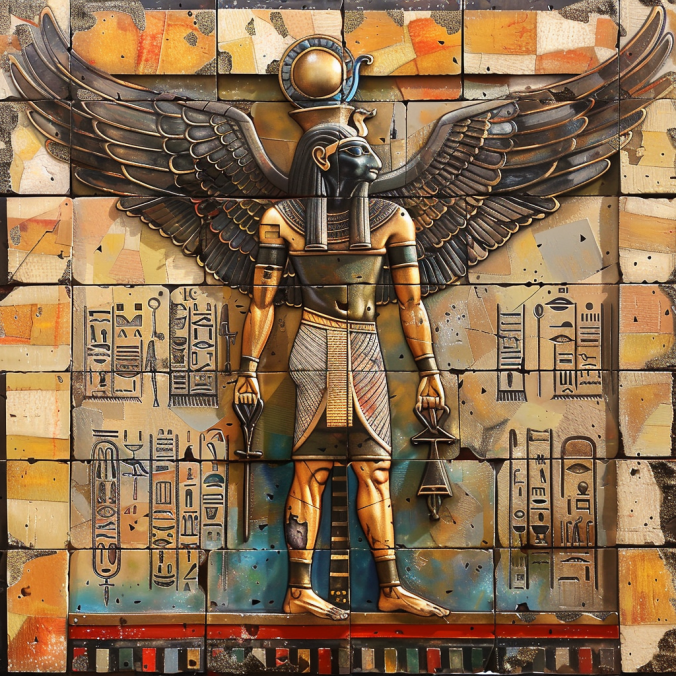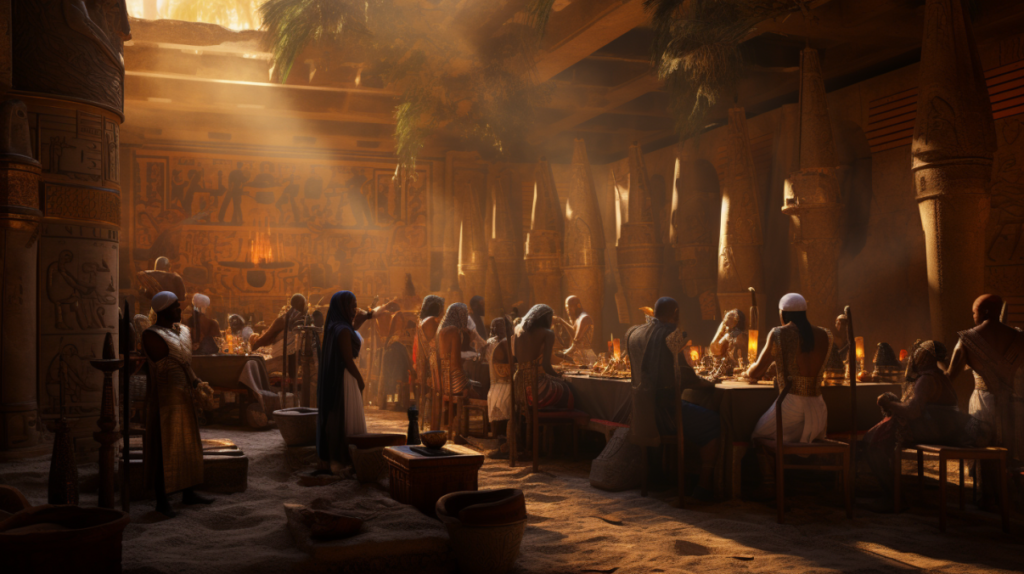In the realm of ancient Egyptian deities, stands Ptah whose influence spans creation, craftsmanship, and the very essence of existence. Picture a divine artisan, a celestial architect, and a custodian of secrets converging within one deity. Exploring Ptah’s realm opens a gateway to understanding not only the genesis of the universe but also the profound significance of craftsmanship, knowledge, and the esoteric arts in ancient Egypt. This article will delve into the multifaceted persona of Ptah, unveiling the divine attributes, cultural significance, and enduring legacy of this deity. Join this exploration to unravel the mysteries and wisdom encapsulated within the realm of Ptah.
Ptah emerges from the depths of Egyptian mythology as a primordial deity, revered as the master craftsman and architect of the universe. According to ancient texts, Ptah’s creative prowess bore the very fabric of existence. He existed before all else, embodying the concept of “thought” and “word,” conceptualizing and enunciating the universe into being through his divine intellect and utterance. Ptah’s association with Memphis, an ancient city in Egypt, further solidified his role as a creator god, where his cult gained prominence and reverence.

Within the rich tapestry of ancient Egyptian culture, Ptah occupied a significant position. He wasn’t merely a creator but also a patron of craftsmen, revered for his guidance in the arts of metalworking, sculpture, and architecture. Ptah’s influence extended beyond creation myths; he was venerated as a divine entity bridging the mortal realm and the spiritual world, offering guidance and inspiration to artisans, scribes, and rulers alike. His association with the Memphite theology, intertwined with the prosperity and growth of the city, solidified his significance within the religious and social fabric of ancient Egypt.
Ptah’s depictions often portray him as a mummified figure wearing a skullcap and holding the ankh (the symbol of life) and the scepter (representing power and dominion). The mummification signifies his role as a deity overseeing rebirth and regeneration, while the tools he holds symbolize his creative prowess and authority over life and death. Moreover, the Djed pillar, a symbol representing stability and endurance, is often linked with Ptah, signifying his enduring and foundational role in the cosmos. These symbols collectively embody Ptah’s multifaceted influence as a creator and sustainer of life within the Egyptian pantheon.

Ptah, depicted as a mummified figure with a clean-shaven head and wearing a skullcap, stands as a distinctive deity in the Egyptian pantheon. His distinguishing feature lies in the prominence of his hands clasping a scepter—a symbol representing his creative prowess and authority over craftsmanship and creation. Often portrayed as a bearded figure, Ptah emanates an aura of wisdom and creative power, mirroring his role as the master craftsman of the universe.
Ptah is revered for his intellect, embodying the fusion of thought and action. His association with Memphis, the ancient Egyptian capital, solidifies his stature as a patron deity of craftsmen and builders. This connection amplifies his role not just as a divine creator but also as a guardian of earthly craftsmen, architects, and artisans.
Ptah’s primary power resides in his creative force, capable of conceptualizing and shaping the universe through sheer thought and utterance. Often hailed as the god of creation, his words and intentions are believed to have forged the cosmos itself, underscoring his divine authority over the act of bringing life and existence into being. His mastery extends beyond creation, encompassing the esoteric knowledge of magic and the healing arts, emphasizing his multifaceted nature.
Within the pantheon, Ptah holds esteemed positions and connections. As a revered creator deity, he stands alongside other principal gods like Ra and Amun, often integrated into their narratives, symbolizing the foundational aspect of creation. Ptah’s familial ties include being the father of the lion-headed goddess Sekhmet and Nefertem, the god of perfume and beauty. His association with the Ennead, the group of nine gods in Egyptian mythology, further cements his pivotal role in the cosmic order.
Ptah’s relationships within the pantheon reflect his pivotal position as a creator and protector, intricately weaving the fabric of Egyptian mythology and civilization through his multifaceted roles and connections.
Ptah’s significance in Egyptian mythology shines brightly through the Heliopolitan cosmogony, where his divine craftsmanship played a pivotal role. According to the Memphite Theology, Ptah was the master architect responsible for envisioning and materializing the world through the power of his thoughts and words. His creative prowess and sheer intellect were believed to have given rise to the universe itself, bringing together the elements and shaping existence from primordial chaos.
Among the pantheon of gods in ancient Egypt, Ptah held a revered place within the Ennead—the group of nine deities worshipped in Heliopolis. His role as a creator and sustainer elevated him to a divine status, often depicted as a mummified figure with a scepter, representing the authority over life and death.

Ptah’s significance extended beyond the creation of the cosmos; he was revered by artisans and craftsmen across Egypt. The deity was regarded as the patron of craftsmen, imparting divine inspiration and skill to those dedicated to perfecting their trades. His connection to the craft emphasized the divine essence within human creativity.
One of the central myths surrounding Ptah involves his role in fashioning the first mound from the waters of chaos, providing the foundation for the world to emerge. This act symbolized the beginning of order and the creation of the physical realm, establishing Ptah’s importance as the prime architect of existence.
Ptah’s words were believed to possess immense creative power. The act of speaking, or ‘naming,’ elements into existence showcased his authority over creation. His utterances were revered as the catalysts that brought life and form to the universe, solidifying his role as a divine creator.
Ptah’s interactions with other gods and goddesses often revolved around his creative abilities and wisdom. Collaborations with deities like Thoth, the god of knowledge and writing, highlight Ptah’s association with wisdom, invention, and the transfer of divine knowledge among the pantheon.
Ptah’s myths and defining events not only shaped the ancient Egyptian understanding of creation but also underscored the importance of craftsmanship, intellect, and divine creativity in their culture
Worship of Ptah in ancient Egypt was marked by elaborate rituals and offerings. Devotees engaged in ceremonies conducted by priests within sacred temples. Offerings of food, incense, and precious objects were presented as tokens of reverence to honor Ptah’s creative prowess and cosmic significance. Rituals often involved chants, prayers, and symbolic acts reflecting the god’s role in creation and craftsmanship.
Ptah’s prominence led to the establishment of dedicated temples, such as the famous Temple of Ptah in Memphis, where priests and followers congregated to pay homage and seek blessings. These sanctuaries served as epicenters for spiritual practices and communal worship, fostering a deep connection between the deity and devotees.

One of the most significant celebrations dedicated to Ptah was the Opet Festival, a grand event held in Thebes to honor several deities, including Ptah, Amun, and Mut. During this festival, statues of the gods were paraded through the streets amidst jubilant crowds, accompanied by music, dance, and offerings. It was a time of joyous celebration, reaffirming the gods’ roles in the ongoing prosperity and order of the universe.
In Memphis, Ptah had his own procession, where his statue was carried in a sacred barque along the Nile River, symbolizing his presence and blessings being extended across the land. The procession was a spectacle of reverence and spirituality, drawing devotees from far and wide to partake in the festivities and seek divine favor from Ptah.
Ptah, the divine architect of ancient Egypt, encapsulates creativity and craftsmanship. Our journey has revealed his enduring influence in modern beliefs and culture. From spirituality to contemporary art, Ptah’s legacy persists, inspiring creativity and reminding us of our capacity for greatness.
His significance goes beyond myth; Ptah symbolizes the eternal pursuit of creation. As we conclude, let’s heed his timeless call—to explore further, to embrace our creative potential, and to honor the enduring legacy of a deity whose essence transcends time
Books:
Online Resources: